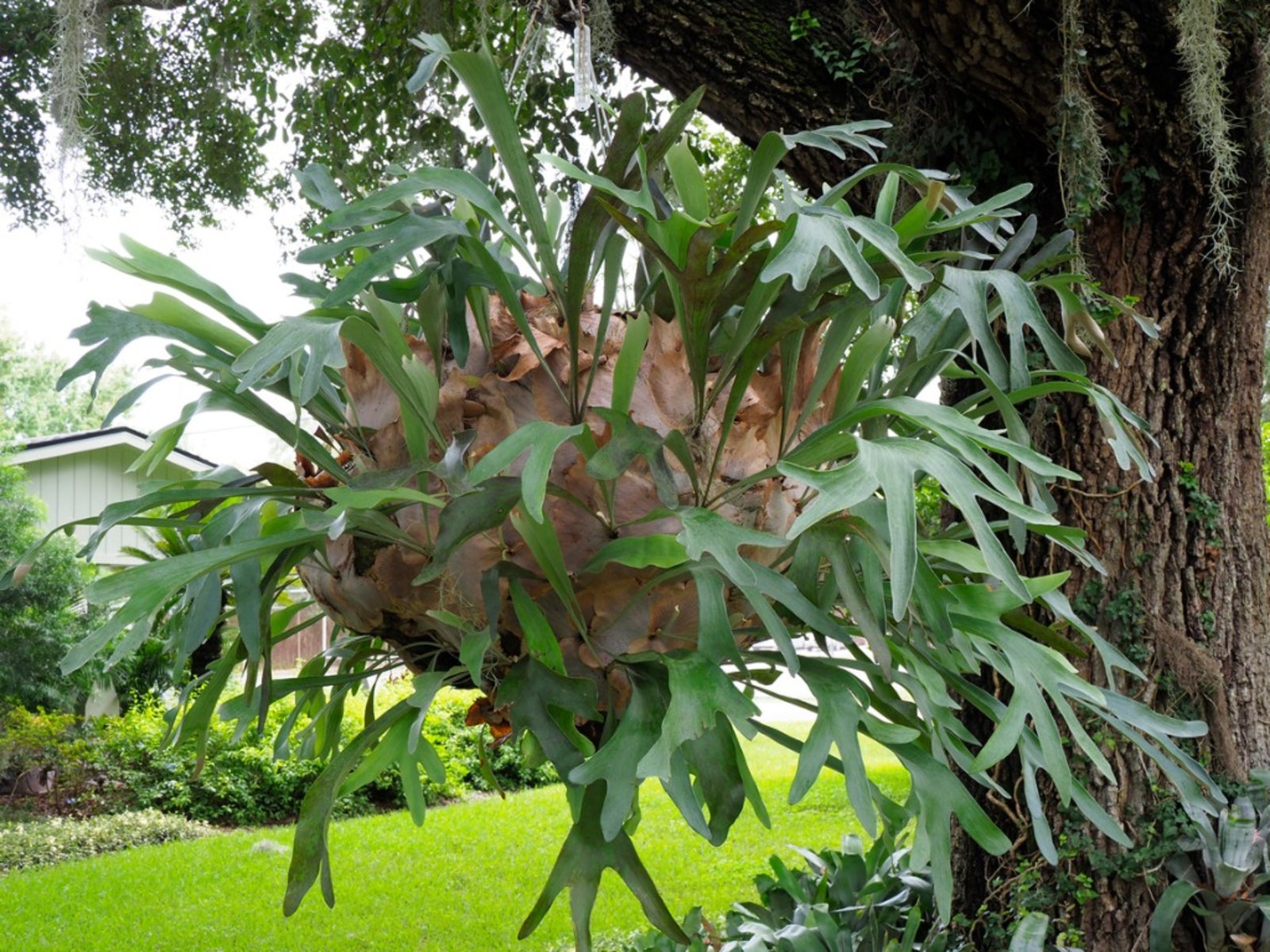Staghorn Fern Plant Problems: How To Treat A Diseased Staghorn Fern


Staghorn ferns are dramatic plants both in the exotic places from which they hail and in the home environment. Although they can be a little tricky to get just so, once a staghorn is established, you can expect few problems with them. Once in a while, however, your staghorn may get sick and that’s why we put this article together. Read on to learn more about diseases of staghorn ferns.
Staghorn Fern Plant Problems
Staghorn ferns can be interesting and exotic additions to your home or landscape. Their large, antler-like leaves are showy and dramatic, making them a favorite of fern enthusiasts. Like any plant, diseases of staghorn fern can develop, but they’re extremely few and far between. In fact, sick staghorn ferns are much more likely to be troubled by incorrect growing conditions than they are actual disease, so if your plant is looking unwell, take heart.
It’s probably something completely fixable. Most of staghorn fern problems are the direct result of care slip-ups, but there are a few problems that are common among these epiphytic wonders. When you’ve reviewed your care plan and are certain they’re getting enough light and nutrients, it’s definitely time to look for other staghorn fern disease symptoms. Don’t stress, we’ve made a list of likely pest and disease problems and how to treat a diseased staghorn below:
Rhizoctonia. When black spots appear on the basal fronds and begin to spread toward the growing point, it’s time to act fast. This is the calling card of Rhizoctonia, a fungal pest of staghorn fern. If left untreated, the black spores will continue their march and kill the entire plant. First, withhold water entirely and reduce the humidity around your plant. If that doesn’t make enough of a dent, try a general use fungicide. In the future, monitor the humidity and the plant’s watering, since excessive moisture is necessary for Rhizoctonia to survive.
Mealybugs and scale. Mealybugs and scale can appear to be diseases even though they’re actually pest infestations. These sap-sucking insects are master mimics, making themselves appear as white, fluffy tufts or waxy shields attached directly to the plant. Mealybugs are a little bit easier to recognize as insects, but they produce copious amounts of white fuzzy wax that can hide their numbers. Avoid using oils on staghorn ferns, instead insecticidal soap can be used to destroy colonies. It may require more than one application, so monitor your plant closely during treatment.
Gardening tips, videos, info and more delivered right to your inbox!
Sign up for the Gardening Know How newsletter today and receive a free copy of our e-book "How to Grow Delicious Tomatoes".

Kristi Waterworth was a regular contributor to Gardening Know How for many years, answering countless queries on plant pests and diseases.
-
 Looking For Plants To Give You The Soft And Fuzzies? Try These 5 Fuzzy Leaf Plant Options
Looking For Plants To Give You The Soft And Fuzzies? Try These 5 Fuzzy Leaf Plant OptionsLovers of texture, drama, silver foliage and tactile plants will adore these special sensory garden additions. These fuzzy leaf plant options will leave you all aglow
By Susan Albert
-
 Get Ready For A Summer Of Hummers! Grow These Full Sun Hummingbird Plants and Flowers
Get Ready For A Summer Of Hummers! Grow These Full Sun Hummingbird Plants and FlowersIf you’re lucky enough to enjoy a sunny backyard, make sure you are maxing out on your pollinator opportunities and grow these full sun hummingbird plants and flowers
By Tonya Barnett